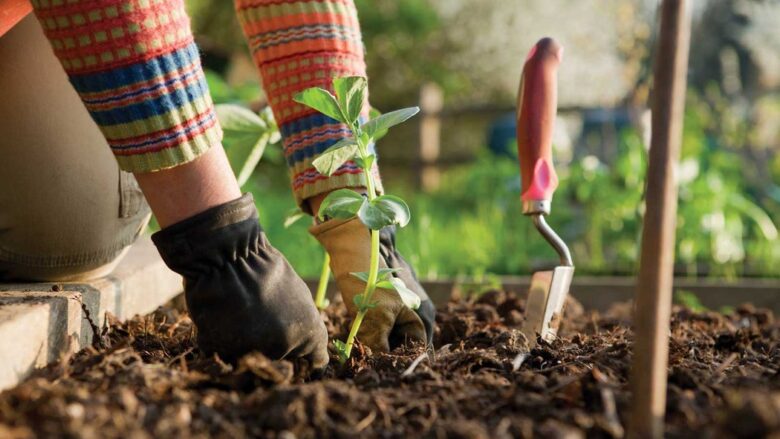You don’t have to spend a fortune on a garden full of blooming flowers and bountiful crops. Budget-conscious gardening allows you to make smart and sensible choices to create a beautiful outdoor space without breaking the bank. It’s a fun activity that’s both creative and practical. It shows you can achieve more with less. With a few simple steps, you can reduce waste, save on supplies, and experience the satisfaction of creating a beautiful garden. This article shows you some important ways to save money without sacrificing the quality and yield of your crops.
Creating an Affordable Garden Plan:
A good plan is the most important part of a successful and affordable garden. Before you buy seeds or tools, survey your space to understand how much light there is and which plants you really want to grow. Drawing a simple floor plan will help you clearly see where each plant goes, preventing overplanting and ensuring you only buy what you need. To minimize food waste when growing, consider what your family likes to eat. A successful plan also means starting small. An easy-to-maintain garden is less likely to get out of control and become too expensive. You can make a budget-friendly, fertile garden by planning.
Choosing and Saving Seeds:
Seeds may be one of your most expensive first purchases, but there are many ways to save money. Instead of buying expensive seed packets from supermarkets, you can also search for seed swaps in your area or through online gardening forums. Many gardeners are willing to donate or swap seeds from their own successful crops. Saving seeds from your crops is another effective way to grow them. It’s simple to collect, dry, and save seeds from vegetables like tomatoes, beans, and peppers for the next growing season. This not only saves money but also helps you grow the right plants for your garden.
How to Improve Your Soil Affordably:
You can have a healthy garden without spending a fortune on commercial fertilizers and soil additives. Making your own compost is one of the best ways to improve your soil without spending a dime. You can create nutrient-rich compost by mixing kitchen scraps (such as coffee grounds, fruit and vegetable peelings, and eggshells) with garden waste (such as leaves and grass clippings). This “black gold” improves the soil, provides it with essential nutrients, and helps it retain more water. You can also contact local coffee shops or farms. They often offer free used coffee grounds or aged manure, both excellent natural fertilizers for your garden.
Water-Saving Methods:
Watering your garden can increase your energy bill, especially during dry spells. For gardening on a budget, it’s important to use water-saving methods. One of the best ways to achieve such an objective is by using a simple rain barrel connected to your gutter to collect rainwater. This provides a free, chlorine-free water source that your plants will love. Spreading a thick layer of mulch around your plants—made from free materials like shredded leaves, grass clippings, or wood chips—will keep the soil moist, so you’ll need to water less often. Watering early in the morning also reduces evaporation, allowing more water to reach the roots where your plants need it most.
Controlling Pests and Diseases:
You don’t have to spend a fortune on chemical sprays to control pests and diseases. You can make many helpful sprays using items you already have around the house. Simply mix water with a few drops of dish soap to repel common pests like aphids. Adding beneficial insects like ladybugs and lacewings can also help repel pests without using chemicals. Planting flowers like marigolds and dill can attract these beneficial insects to your garden. Good gardening habits, such as ensuring plants have plenty of room to breathe and removing diseased plants promptly, are also crucial for preventing pests before they become problems. Such practices will save you time, money, and effort in the long run.
Maximizing Space with Vertical Gardening:
Vertical gardening is a wonderful way to make the most of a small garden or balcony without breaking the bank. You can build a vertical tower using existing materials like old pallets, plastic bottles, or ladders. Bamboo poles or rope trellises are ideal for growing vines like cucumbers, beans, and tomatoes, as they allow the plants to grow upwards instead of sprawling across the ground. This not only saves space but also makes harvesting easier and promotes air circulation. Even the smallest space can yield more by embracing the concept of vertical gardening.
Conclusion:
Being frugal in your garden isn’t just about saving money; it also means connecting with nature and living more sustainably. By planning, creating your own compost, saving seeds, and using resources wisely, you can create a beautiful and functional garden without exceeding your budget. The skills you learn will not only help you grow an abundance of fresh, healthy food but will also give you a sense of accomplishment and independence. So put these money-saving tips into practice and watch your garden grow into a beautiful masterpiece that showcases your ingenuity and resourcefulness.
FAQs:
1. What are the cheapest crops a beginner can grow?
It’s recommended that beginners start with vegetables that require little care and produce a satisfactory yield. Lettuce, spinach, radishes, carrots, zucchini, and beans are all nutritious choices. They grow quickly and don’t require much extra care.
2. What are some ways to find gardening tools for free or at a low price?
Garage sales, thrift stores, and online marketplaces like Facebook Marketplace are excellent places to find gardening tools for cheap or even free. You can also ask friends or family if they have any old tools they no longer use. Some communities have lending libraries where you can borrow tools when needed.
3. Is it cheaper to buy seedlings or grow them from seed?
Growing seedlings from seed is generally cheaper than buying them. For the price of one or two seedlings, you can grow dozens from a single packet of seeds. Growing seedlings takes more time and effort, but it gives you more options and is an important part of frugal gardening.
4. What is the best free mulch?
Chopped leaves, also called leaf compost, are one of the best free mulches you can use. As they decompose, they retain moisture, prevent weeds, and provide the soil with nutrients. You can also get free grass clippings (thinly layered), pine needles, or wood chips from your local arborist.
5. How can I make my own compost without a special bin?
You don’t need a special bin to make compost. You can create a simple compost pile in the corner of your garden. Simply layer “green” materials (like kitchen scraps and fresh grass clippings) on top of “brown” materials (like dry leaves and shredded cardboard). Turn the compost every one or two weeks with a pitchfork to keep it moist. Within a few months, you’ll have rich compost for your garden.



